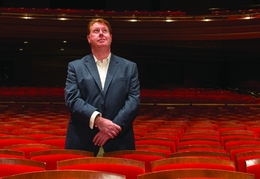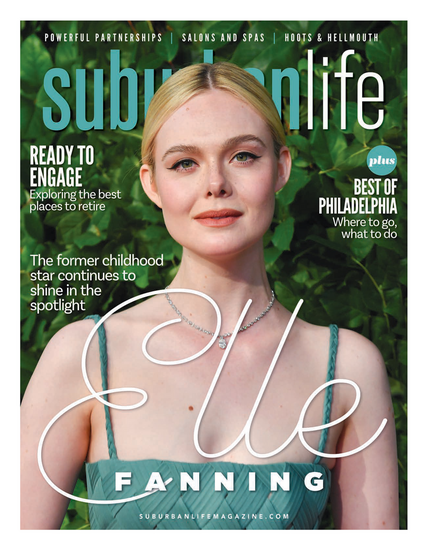
Born in idyllic County Kerry, Ireland, Jim Cotter came of age in Dublin. It was the 1970s, a time when the country “was trying to assert itself as something more than a small island off the coast of Britain,” Cotter recalls. A swell of nationalism immersed him in Irish culture: Irish dance, Irish music, Irish literature. At a certain point he “wondered what else there was.”
Eventually, he found out. Older teenagers in the neighborhood introduced him to blues and classical music, and he started to read books with more diversity—in other words, works of art that were distinctly non-Irish.
“You have to understand how alien all that stuff is when you’re sitting in Ireland, pre-Internet … with basically one radio channel, one TV channel and whatever comes over from the BBC from across the water,” he says. “I wanted to know how other people were. … When the O’Jays sang about the possibility of universal love in ‘Love Train,’ I knew what they were talking about. They were from Philadelphia—an experience so radically different from mine—but I could still connect with the idea they were trying to expound, and that to me was phenomenal.”
He went to modern-art galleries in Dublin, wandering the permanent collections to view pieces by internationally acclaimed artists, wondering: Why would this artist from that country express that idea this way? How can that person be so different from me yet I can still understand what they’re saying?
All these years later, Cotter, 53, is still asking the same questions—and enlisting the help of individuals who are uniquely qualified to answer them—through Articulate with Jim Cotter. The 30-minute “un-arts” show, which is produced out of Stotesbury Mansion in Rittenhouse Square, is seen on 115 PBS stations across the country, including WHYY-TV in Philadelphia. The show’s central tenet: Artists can help to explain the world around us, and their art connects us all.
The Way Things Are
Articulate with Jim Cotter features art of virtually every possible form—from punk bands to neuroscience artists, from concert pianists to textile designers, and from choreographers to jewelry makers. Each episode focuses on artists and their art, but really, the show aims to dig deeper, attempting to answer big, hairy, existential questions along the lines of, “What are we here?”
A few examples of past episodes: how “Party Hard” rock ‘n’ roll icon Andrew W.K. copes with feelings of pervasive dread; how composer Gerald Busby renewed his “lust for life” in the aftermath of his struggles with drug addiction and the heartbreaking death of his beloved life partner; and how crochet sculptor Caitlin T. McCormack uses her skeleton-like art to deal with humanity’s “greatest fear,” our own inevitable mortality.
“We’re not here for an art-history lesson or a musicology lesson,” Cotter says. “We’re here to educate the audience about art, per se, although we sneakily do that; we’re here to sort of say, ‘There’s a really interesting and elegant route to answering a lot of the questions you have about why life is the way it is.’”
Furthermore, the show aims to spread the word that everyone—not just those who lean a certain way, politically speaking— can learn from an artist’s experiences and view of the world.
“In some ways I’m sitting here as every progressive liberal’s worst nightmare,” Cotter says. “I will ask questions on behalf of the middle of America that I have absolutely no sympathy with, but I know somebody watching the show will say, ‘Yes, but what does it mean to me? I’m in western Illinois. I’m in Arkansas.’ I always have that in my head. If I’m going to believe that this show is for everybody and that everybody is inherently human, then I have to make a show for people who may not necessarily be the kind of people I’d want to have a cup of coffee with.”
He cites one episode, “Changing Minds about Climate Change,” in which he asks large-scale landscape artist Zaria Foreman about feedback she may receive from individuals who disagree with the science behind climate change.
“She said, ‘What’s the harm in taking precautions? What’s wrong with being a little cleaner?’” he recalls. “I thought: That’s the right answer. … A TV show isn’t going to mend the world, but I think the artists we feature, with the way they think about the world, you’re almost going to change people’s minds one by one.
“If somebody hears an artist say something that profoundly affects them, not because they’re a fan of art but because they are a human being, that then introduces the idea that art is not this weird thing that’s ‘not for them.’”
Karen Lentz, owner of M&H Custom Framing and Gallery in Warminster, agrees that the arts can and should be a force to unite, not divide. When considering new artists for her gallery, she says she has a soft spot for those who create “healing art” with a something of a “softer side.”
“Art can be a great healer and bring people together,” she says. “Music can do that, too. Some artists make political artwork to make a statement. What I want to know with art like that is: What’s the point? Is it unifying? Is it to divide? Or is it to create a conversation? … If it’s to create a conversation, hopefully it’s a calm conversation.”
The Good Stuff
Cotter admits he’s no art expert. If anything, he says, he’s “a bluffer” who hates to feel ignorant.
“I have a fairly solid grounding in art history, but I’m not an art historian,” he says. “The same with music; play me something and I’ll know what it is, but I’m not a musicologist. I can’t conduct an orchestra. I can’t play the violin. I’m the ultimate failed artist; that’s what makes me most interested in why people make the magic they do and how they do it.”
This “magic” might come from the brush of accomplished painter or the hands of a great musician; he even sees it in craftsmen—say, someone who has the skill to refinish a pool table. Their works may be beyond his ability, and even beyond his understanding, but that doesn’t stop him from trying.
“I am massively curious about everything,” he says. “I want to know why you are the way you are in the world, and to be honest with you that’s what the show is about. When anyone walks in here, we all say we have one question: ‘Who are you, and why are you this way?’ … If you can ask those kinds of questions in a good way, you will educate yourself about yourself and, at that, the nature of existence.”
A career in media began somewhat accidentally, almost comically, for Cotter—the son of a journalist (his father) and a teacher (his mother). When he was 14, he loved two things: soccer and radio. One day he rode his bike to a charity soccer match between two radio stations. When one of the goalkeepers went down with an injury, Cotter stepped in and played well enough to help his team win the match. The team invited him back to the station to celebrate, and this “foot in the door” was all he needed. Shortly thereafter, he began working at the station, learning the ins and outs of radio.
By age 22, he had a solid résumé and a five-year plan to work for the BBC—a goal he would achieve—though life took him on a brief but important detour to Crete, in the Mediterranean. While there he met the woman who would become his wife, a Dutch citizen who had earned her Ph.D. from the University of Maryland. When she won a job in Philadelphia, she posed to him the following question: “Are you ready to go?”
In Philadelphia, Cotter got a job at Temple University’s classical and jazz station, WRTI. There, he had his own radio gig, Creatively Speaking, which was something of a radiobased precursor to Articulate with Jim Cotter.
“When I came back into this, I hadn’t been near television since 1987,” says Cotter, who now lives in Wynnewood. “I had done some video production as a sideline, so I knew the technology, I knew the cameras, and I knew the editing systems. But I didn’t know the culture of American television, and that turned out to be a benefit.”
He came into the show with fresh ideas, but he knew he certainly couldn’t do it himself. At the same time, he didn’t have the budget to hire a “seasoned” staff, so he turned to ambitious, creative-minded individuals fresh out of journalism school and film school—like Constance Kaita, his director of operations, and Tori Marchiony, his executive producer.
“So we’re sitting there and making a lot of mistakes, which I think you have to do, right?” he says. “You have to make the bad stuff so the good stuff shows through later. I’m not sure we’re making the good stuff yet; I pray every day.”
Changing the World
Cotter’s 14-person team of writers, video editors and other staff work together to make 24 episodes per year—12 hours of television—and probably twice that amount of content exclusively for social media and the show’s website, ArticulateShow.org. Cotter credits much of the show’s success to his team, most of whom are in their 20s.
“These kids really believe that their actions on this planet can make the world better and can right wrongs and fix things: the environment, prejudice, war—all that stuff,” he says. “They come in here every day believing it, and you can’t be around that and ignore it.”
In Kaita’s mind, each episode aims to have the editorial values of 60 Minutes and the production value of Hollywood. Like her fellow teammates, she appreciates the culture of personal and professional discovery, epitomized by the goal shared by the entire staff: “to continue to be embarrassed and amused by what we did six months ago.” To that end, Kaita’s creativity and stickto-it-iveness have helped her make great strides in booking increasingly prominent artists. One day, this conservatory-trained concert pianist hopes to run a nonprofit arts organization.
Marchiony, for her part, has her eye on some national awards for Articulate with Jim Cotter. Furthermore, she wants the show to become the “preeminent arts media brand,” and not necessarily just in America. Most importantly, she wants the audience to feel respected by the content her team creates.
For Cotter, he’s eager to keep raising the bar on the quality of every episode. He also wants to build his audience as a way to become “an instrument for change.”
“Art is a much higher form of communication, and that’s what we’re driving at with this show,” he says. “We’re good when we have gotten [artists] to think deeply and articulate something profound or insightful or life enhancing, so the audience gets something from it beyond ‘This person can play the guitar’ or ‘This person can sculpt’ or whatever it may be. That’s what we try to do every day.”
Photography courtesy of Articulate with Jim Cotter
Published (and copyrighted) in Suburban Life Magazine, April 2018.
.
.
.


